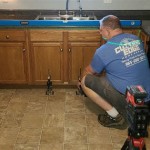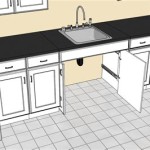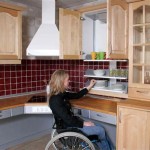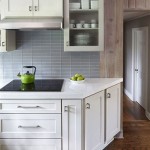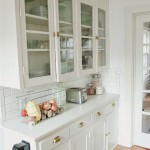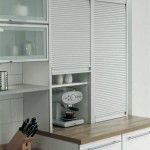```html
Geneva Steel Kitchen Cabinets: A Durable and Functional Choice
Geneva Steel Kitchen Cabinets represent a specific category within the broader landscape of cabinetry options. These cabinets, distinguished by their steel construction, offer a unique blend of durability, functionality, and aesthetic possibilities. Understanding the characteristics, advantages, disadvantages, and considerations associated with Geneva Steel Kitchen Cabinets is crucial for homeowners and designers seeking a long-lasting and visually appealing kitchen space.
The primary defining feature of Geneva Steel Kitchen Cabinets is the utilization of steel as the core material for the cabinet boxes, doors, and drawer fronts. While other materials like wood, particleboard, and medium-density fiberboard (MDF) are common in cabinet construction, steel provides inherent strength and resistance to various environmental factors. This material choice impacts the overall performance, lifespan, and maintenance requirements of the cabinets.
The term "Geneva" in relation to steel kitchen cabinets likely signifies a specific manufacturer, style, or era of production. It is essential to research the specific Geneva Steel Kitchen Cabinets in question to understand the exact type of steel used, the construction methods employed, and any unique design features that distinguish them from other steel cabinet options. Identifying the manufacturer and model can greatly assist in determining the age, condition, and potential value of the cabinets, particularly in the case of vintage or antique models.
Durability and Longevity of Steel Cabinets
One of the most significant advantages of Geneva Steel Kitchen Cabinets is their exceptional durability. Steel is inherently resistant to moisture, pests, and fire, making these cabinets a robust choice for the demanding environment of a kitchen. Unlike wood-based cabinets, steel will not warp, rot, or become infested with insects. This resistance to environmental factors translates into a longer lifespan and reduced maintenance needs compared to traditional wood cabinets.
The strength of steel also allows these cabinets to withstand heavy loads and impacts without significant damage. This is particularly beneficial in kitchens where cabinets are frequently used to store heavy cookware, appliances, and other items. The rigid structure of steel prevents sagging or deformation over time, ensuring that the cabinets retain their structural integrity and functionality for many years.
Furthermore, the powder-coated or painted finishes commonly applied to steel cabinets are highly resistant to scratches, stains, and fading. These durable finishes protect the underlying steel from corrosion and maintain the aesthetic appeal of the cabinets for an extended period. Regular cleaning with mild soap and water is typically sufficient to keep steel cabinets looking their best, minimizing the need for specialized maintenance or refinishing.
Design Considerations and Aesthetic Versatility
While steel might initially be perceived as a purely functional material, Geneva Steel Kitchen Cabinets can offer significant aesthetic versatility. The smooth, clean lines of steel cabinets lend themselves well to modern and contemporary kitchen designs. The ability to apply a wide range of colors and finishes to steel allows for customization to match various design preferences. Powder coating provides a durable and even finish, available in virtually any color imaginable.
Beyond color, the texture and sheen of the finish can further enhance the aesthetic appeal of steel cabinets. Options range from matte and satin finishes to high-gloss coatings that reflect light and create a sleek, modern look. Embossed or textured steel panels can also add visual interest and depth to the cabinet design. The possibilities for customization are extensive, allowing homeowners to create a unique and personalized kitchen space.
The inherent modularity of steel cabinet construction also allows for flexible design options. Cabinets can be easily configured to accommodate various kitchen layouts and storage needs. Open shelving, glass-front cabinets, and integrated appliances can be seamlessly incorporated into the steel cabinet design, creating a functional and visually appealing kitchen environment. The thin profile of steel cabinet doors and frames can also maximize interior storage space, providing efficient organization and accessibility.
Factors to Consider Before Installation
Despite the numerous advantages of Geneva Steel Kitchen Cabinets, several factors should be carefully considered before installation. One potential drawback is the cost, which can be higher than that of some wood or laminate cabinets. The manufacturing process for steel cabinets is more complex and requires specialized equipment, which can contribute to the higher price point. However, the increased durability and longevity of steel cabinets can offset the initial cost over time, making them a worthwhile investment in the long run.
Another consideration is the potential for denting or scratching the steel surface. While steel is generally resistant to damage, sharp objects or heavy impacts can cause dents or scratches that may be difficult to repair. It is important to handle steel cabinets with care during installation and use, and to take precautions to protect them from potential damage. Applying protective films or coatings to vulnerable areas can help to minimize the risk of scratches and dents.
The weight of steel cabinets can also be a factor to consider, particularly during installation. Steel is significantly heavier than wood or laminate, which may require additional support or reinforcement in the kitchen structure. It is essential to consult with a qualified contractor or installer to ensure that the kitchen floor and walls can adequately support the weight of the steel cabinets. Proper installation is crucial to ensure the stability and longevity of the cabinets.
Finally, the thermal properties of steel should be taken into account. Steel can conduct heat and cold more readily than wood, which may affect the temperature of items stored inside the cabinets. In very cold or hot environments, condensation may also form on the steel surface. Insulating the interior of the cabinets or using dehumidifiers can help to mitigate these issues and maintain a stable temperature and humidity level inside the cabinets.
In conclusion, Geneva Steel Kitchen Cabinets offer a unique combination of durability, functionality, and design versatility. While the initial cost may be higher than that of some other cabinet options, the long-term benefits of steel, including its resistance to moisture, pests, and fire, make it a worthwhile investment for homeowners seeking a long-lasting and visually appealing kitchen space. By carefully considering the factors discussed above, homeowners can make an informed decision about whether Geneva Steel Kitchen Cabinets are the right choice for their kitchen renovation or new construction project.
```
A 64 Year Old Geneva Kitchen That Looks Like It Was Installed Yesterday Retro Renovation

A 64 Year Old Geneva Kitchen That Looks Like It Was Installed Yesterday Retro Renovation

Drew Collects 60 Geneva Kitchen Cabinets Four Sets In All To Get The Pieces For His New Retro Renovation

Vintage Geneva Kitchen Cabinets Made Retro Fresh Again In This Remodel

Metal Geneva Cabinets Pros Cons Please Help

A 64 Year Old Geneva Kitchen That Looks Like It Was Installed Yesterday Retro Renovation

A 64 Year Old Geneva Kitchen That Looks Like It Was Installed Yesterday Retro Renovation

Refinished Geneva Metal Cabinets Dream Kitchen Cabinet

Pin By Linda Nelson Dehoff On Kitchen Cabinets Metal Set Cabinet

Vintage Geneva Cream Metal Cabinet Set Ecobuilding Bargains

